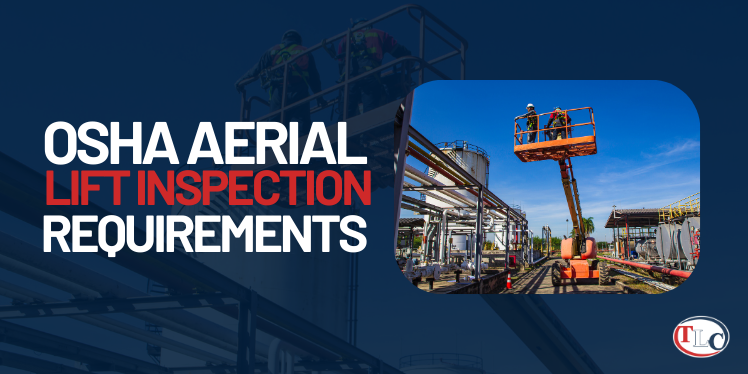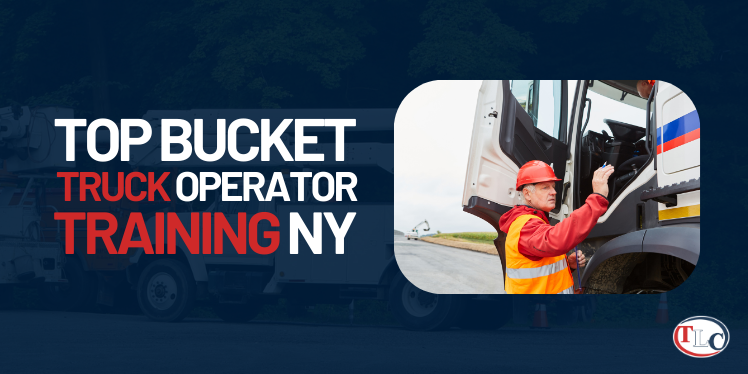OSHA Aerial Lift Inspection
To help maintain a safe worksite environment, OSHA (Occupational Safety and Health Administration) has aerial lift inspection requirements that employees must follow. ANSI (American National Standards Institute) standards require a yearly inspection every 13 months.
They also require pre-start and intermittent inspections to ensure equipment condition. ANSI/SIA Standards A92.5 and A92.6 section 6.6(2) state aerial lifts should be inspected every three months or 150 hours of use.
It’s important to follow all OSHA aerial lift inspection guidelines and recommendations for legal reasons and to reduce personal and workplace hazards.
Key OSHA Standards for Aerial Lift Inspections
OSHA-advised aerial lift inspection standards can be broken down into three categories: pre-use inspection, routine use inspection, and annual inspections. An authorized mechanic with OSHA and ANSI certifications can carry out annual inspections. If you’re interested in learning more about ANSI-certified lift maintenance, our team can help.[1]
It is worth noting that the standards for aerial lifts depend on the kind of inspection. For pre-inspection, a general check of all components is acceptable. For routine inspections, a more detailed inspection is required.
These guidelines aim to prevent accidents and ensure operator safety. Missing pieces of signage could lead to catastrophe, as could unnoticed leaks or broken pieces of equipment.
Frequency of Inspections: OSHA Guidelines
Aerial Lift Pre-Use Inspection
For persons conducting pre-start aerial lift inspections, OSHA has a helpful handout. This handout walks you through the checklist for pre-start inspections. These components are broken into two categories: vehicle components and lift components.
OSHA Fact Sheet
Aerial Lift Inspection Vehicle Components
- Proper fluid levels (oil, hydraulic, fuel, and coolant)
- Leaks of fluids
- Wheels and tires
- Battery and charger
- Lower-level controls
- Horn, gauges, lights, and backup alarms
- Steering and brakes
Aerial Lift Inspection Lift components
- Operating and emergency controls
- Personal protective devices
- Hydraulic, air, pneumatic, fuel, and electrical systems
- Fiberglass and other insulating components
- Missing or unreadable placards, warnings, or operational, instructional and control markings
- Mechanical fasteners and locking pins
- Cable and wiring harnesses
- Outriggers, stabilizers, and other structures
- Loose or missing parts
- Guardrail systems
Annual Inspection Requirements
A92.5 section 6.7 and A92.6 section of the ANSI/SIA Standards require aerial lift annual inspections. These inspections are carried out according to ANSI standards and manufacturer’s guidelines.
According to the ANSI standards, these manufacturer’s tests include:
- Loading test
- Visual inspection
- Stability tests
- Insulation tests
To pass inspection, an aerial lift needs to be visually inspected for defects and checked for proper operation per OSHA and ANSI standards. These inspections apply to all aerial platforms or Mobile Elevated Work Platforms (MEWP).
Components of Aerial Lift Inspections
There is a difference between routine and thorough inspections. A routine aerial lift inspection checks for general issues, clear breaks, or issues with controls, emergency controls, and equipment pieces.
A thorough 13-month inspection requires taking apart aspects of the aerial lift where necessary to check for wear and tear and is much more comprehensive.
Key components of the aerial lift that require inspection during an annual check include, but are not limited to:
- Visual inspection: A complete inspection of all accessible areas.
- Acoustic Emissions (AE) test: A test for fiberglass and steel using sensitive sensors.
- Magnetic particle inspection: A way to test critical welds for cracks or other imperfections under the surface.
- Dye penetrant inspection: A way to test critical welds, plates, and castings on non-ferrous materials.
- Ultrasonic inspection: This test checks for flaws in accessible pins.
- Torque testing: This test checks essential fasteners of accessible areas.
- Functional and operational testing: Checking for proper function and operation of all aerial lift parts.
- Dielectric testing (where applicable): Checking the insulation properties of all insulation materials, where appropriate, to aerial lift construction and use case.
Note that these categories rely on the vehicle in question and the most up-to-date ASNI and OSHA certifications.
Compliance and Documentation
OSHA requires documentation of all inspections, including pre-usage inspections. You can use a standard sheet of paper or create a company page for inspections for daily inspections. West Virginia University has an excellent pre-use checklist sheet as well.
Proper documentation is crucial to maintaining OSHA standards for routine and annual inspections. Be sure to comply with all local and national record guidelines for inspection documentation.
You should receive inspection records from your mechanic after an annual aerial lift inspection. Be sure to save this paperwork in a safe location for record-keeping purposes.
Fall Protection and Safety Measures
OSHA’s guidelines for preventing falls during aerial lift use include the following:
- Ensure that access gates or openings are closed.
- Stand firmly on the floor of the bucket or lift platform.
- Do not climb on or lean over guardrails or handrails.
- Do not use planks, ladders, or other devices as a working position.
- Use a body harness or a restraining belt with a lanyard attached to the boom or bucket.
- Do not belt off to adjacent structures or poles while in the bucket.
Wear all required Personal Protective Equipment (PPE) when operating an aerial lift. According to 1926.453(b)(2)(v), “A body belt shall be worn and a lanyard attached to the boom or basket when working from an aerial lift….The use of a body belt in a tethering system or in a restraint system is acceptable and is regulated under § 1926.502(e).”
Training for Safety and Compliance
OSHA follows ANSI training recommendations with aerial lifts and other MEWPs. Employees should undergo general training by a certified individual and familiarization training for any equipment unfamiliar to them.
Training includes proper safety protocols and operation instructions, identifying potential hazards in the workspace, and stabilizing a lift where applicable. Working with certified training specialists can guarantee employees know this information.
Frequently Asked Questions
What is the OSHA standard for aerial lifts?
OSHA requires certain standards for aerial lifts. These standards include routine inspections. Training standards are also separate from inspection standards and should be respected. Refer to their website for more information on OSHA’s comprehensive aerial lift standards.
How often should aerial lifts be visually inspected for defects?
An aerial lift should be inspected pre-use. On top of this, aerial lifts require inspection every three months or 150 hours of use. Finally, annual comprehensive inspections are required by OSHA and ANSI standards every year or 13 months after the previous assessment.
Does OSHA require a harness in an aerial lift?
According to OSHA 1926.453(b)(2)(v), “A body belt shall be worn and a lanyard attached to the boom or basket when working from an aerial lift….The use of a body belt in a tethering system or in a restraint system is acceptable and is regulated under § 1926.502(e).” A harness or other personal safety equipment is required in an aerial lift. Remember, there may be additional requirements for PPE on top of a harness or belt, so pay attention to these requirements.
Conclusion
Contact us if you have questions about aerial lifts or would like to schedule an annual aerial lift inspection. Our team would happily answer your questions and help you plan a visit to our shop.









